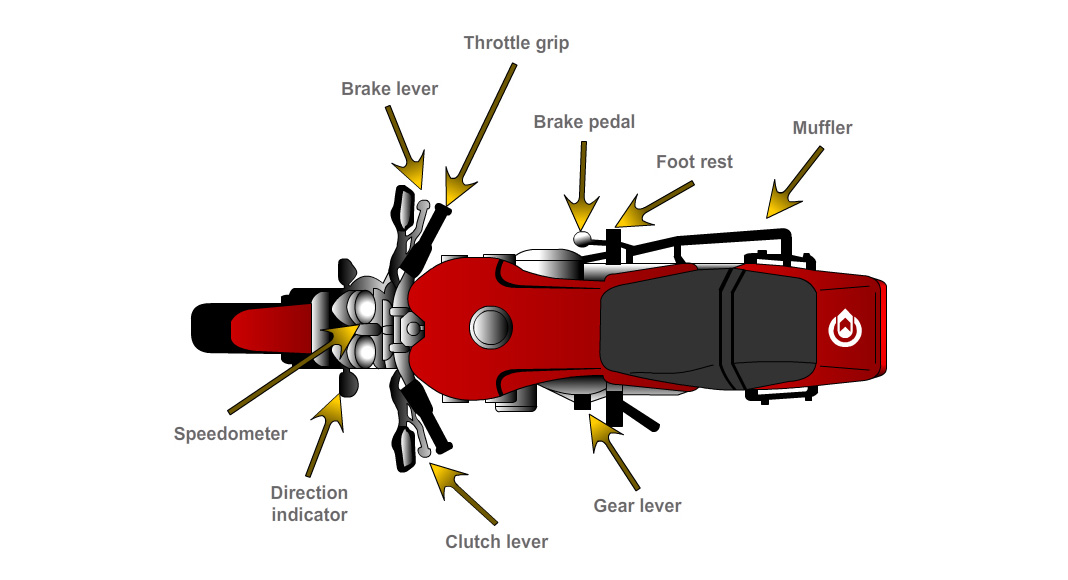1. Regular Inspection:
- Perform a thorough visual inspection before each ride to check for loose or damaged parts, leaks, and tire condition.
2. Tire Maintenance:
- Check tire pressure regularly and maintain it within the manufacturer's recommended range. Ensure proper tread depth and look for signs of wear or damage.
3. Fluid Levels:
- Check and top up engine oil, brake fluid, coolant, and hydraulic clutch fluid as needed. Follow the manufacturer's specifications for the correct type and quantity.
4. Chain and Drivetrain:
- Keep the chain clean and well-lubricated. Ensure proper tension by following the manufacturer's recommendations. Check sprockets for wear.
5. Brakes:
- Regularly inspect brake pads and discs for wear and damage. Check brake fluid levels and replace or bleed the brake fluid if it's discolored or contaminated.
6. Lights and Electrics:
- Ensure all lights are working correctly, including headlights, taillights, brake lights, turn signals, and indicators. Replace any burnt-out bulbs.
7. Air Filter:
- Clean or replace the air filter according to the manufacturer's schedule. A clean filter ensures proper air intake for the engine.
8. Suspension:
- Check and adjust suspension settings, including preload and damping, based on your riding style and the manufacturer's recommendations.
9. Fasteners and Bolts:
- Inspect and tighten all nuts, bolts, and fasteners. Loose parts can lead to dangerous situations on the road.
10. Battery: - Check the battery's condition and ensure it's fully charged. Clean and tighten the terminals. Consider using a battery tender if the bike is not in regular use.
11. Exhaust System: - Inspect the exhaust system for leaks, corrosion, or damage. Replace or repair any faulty components.
12. Lubrication: - Lubricate moving parts such as cables, levers, and pivot points. Pay special attention to the throttle and clutch cables.
13. Coolant System: - Ensure the coolant system is filled to the correct level and that it's free of air bubbles. Check for leaks and replace coolant as needed.
14. Steering and Controls: - Check the handlebars and controls for proper alignment and functionality. Lubricate control cables and ensure smooth operation.
15. Spark Plugs: - Inspect and clean or replace spark plugs based on the manufacturer's recommendations. Properly gapped and functioning spark plugs are essential for combustion.
16. Safety Gear: - Don't forget to maintain your riding gear, including helmets, gloves, and protective clothing. Replace damaged gear as necessary.
17. Owner's Manual: - Consult your motorcycle's owner's manual for specific maintenance schedules and procedures. It's a valuable resource for keeping your bike in top condition.
18. Professional Service: - For major maintenance tasks, such as valve adjustments or engine work, consider consulting a professional motorcycle mechanic or service center.
Regular motorcycle maintenance is key to ensuring your bike's longevity and safety on the road. By following this checklist and the manufacturer's recommendations, you can keep your motorcycle in optimal condition and enjoy many trouble-free rides.




Comments (0)